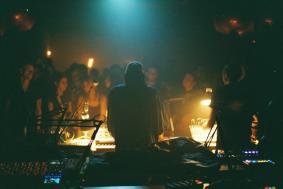
Fall 2022 — Issue 1, Volume 2 new
This issue of IEEE BITS the Information Theory Magazine showcases how information processing tools can be used to address challenges arising in the arts and humanities.
Column article(s)
Scroll to see all columns in this issue.
Machine learning (ML), being now widely accessible to the research community at large, has fostered a proliferation of new and striking applications of these emergent mathematical techniques across a wide range of disciplines. In this article, we will focus on a particular case study: the field of paleoanthropology, which seeks to understand the evolution of...
Ancient texts are unique evidence providing a glimpse into the thoughts, day-to-day life, and culture of people of long-gone eras. Paleography, the study of writing, aims at documenting the inscriptions, transliterating the texts, reconstructing their historical context, and studying the evolution of writing itself. The digital revolution gave rise to comput...
Textual documents, such as manuscripts and historical newspapers, make up an important part of our cultural heritage. Massive digitization projects have been conducted across the globe for a better preservation of, and for providing easier access to such, often vulnerable, documents. These digital counterparts also allow to unlock the rich information contai...
Information lattice learning (ILL) is a novel framework for knowledge discovery based on group-theoretic and information-theoretic foundations, which can rediscover the rules of music as known in the canon of music theory and also discover new rules that have remained unexamined. Such probabilistic rules are further demonstrated to be human-interpretable. IL...
An important question in cultural heritage concerns the make process of an artifact. Understanding the make process provides insight related to the origin, techniques, and craftsmanship used to make the artifact. Searching for tool marks or traces left by the artist’s hand is one way of retrieving clues related to the make process. X-ray computed tomography ...
Empirical research in science and the humanities is vulnerable to bias which, by definition, implies incorrect or misleading findings. Artificial intelligence-based analysis of visual artworks is vulnerable to bias in ways specific to the domain. Works of art belong to a distinct cultural category that often prioritizes such characteristics as hand-craftsman...
In recent decades, cultural heritage research—and in particular art investigation—has been undergoing a digital revolution. This is due both to improvements in the digitization and the acquisition of artifact’s images generated using traditional 2-D imaging methods as well as the growing adoption of a range of more recently introduced spectroscopic imaging t...
















